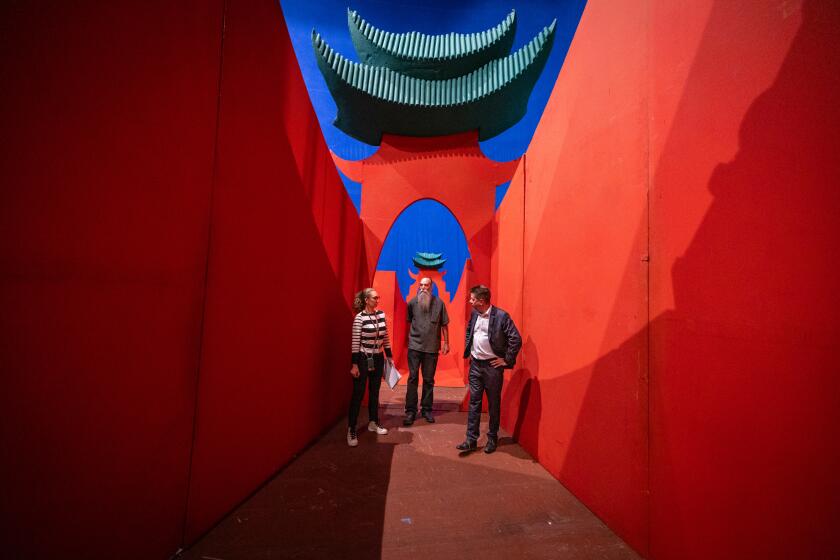The color in everyday Guatemala
Most professional world dance companies depict village life using a uniform cadre of dancers in their early 20s -- a corps based on the M.O. of classical ballet. Not Ballet Moderno y Folklorico Nacional de Guatemala. At the John Anson Ford Amphitheatre on Saturday, the 15-dancer ensemble incorporated individuals ranging from 18 to 60, offering a much more inclusive and humane statement of antique Central American traditions.
Similarly, general director Lucia Armas avoided hard-sell, in-your-face choreography in her three regional suites, preferring to emphasize work tasks, character relationships and patterns of courtship.
In her dances from the northwestern Ixil region, women carrying large terra cotta jugs interacted with carnival dancers in monkey masks, a saleswoman, a photographer and a bird seller. Dancing evolved from walking steps and daily activities, just as a wooing dance emerged from the fusion of character gesture and the live flute-and-drum accompaniment.
Although the costumes displayed plenty of variety, the prevalence of red dresses and jackets -- and sandals -- gave this community a distinctive look. In contrast, “My Eastern Land” featured cowboy attire for the men and a range of dress styles for the women -- with most of them sporting bare shoulders.
The sensual mobility of those shoulders helped the women compete with the men’s vigorous rope and machete dances, but soon the company began performing intricate choreography for couples with plenty of links to social dances from the American Southwest.
“Pilgrimage” proved something of a mess as dance-theater. It began with a reverent procession through the audience of people carrying a facsimile of the beloved “Cristo Negro” statue from Esquipulas. The solemnity continued when the effigy reached the stage, but suddenly perky little carnival dances broke the mood.
Well executed and gorgeously costumed, these dances had their own fascination -- starting with the masks the dancers wore, which often portrayed pink-skinned European faces. But the clumsy transition from all those prayers looked culturally insensitive -- using people’s faith as a pretext for spectacle. Yes, happy celebrations do follow religious rituals, but the juxtaposition needs to be staged and choreographed with great care or the result seems exploitative.
The program began with a 40-minute marimba concert led by company musical director Rene Argueta. The playing remained exemplary, but the Ford’s sound system often transmitted the shimmering overtones as a harsh metallic rattle.
In the last act, the locally based Lazaro y su Ballet Folklorico Internacional contributed a splashy, barefoot pre-Columbian rite, accompanied by drums and seed-pod anklets. The 19 dancers then took positions on the hillside steps at the back of the stage, making their glittering robes and enormous feathered headdresses a backdrop to the Guatemalan finale.
More to Read
The biggest entertainment stories
Get our big stories about Hollywood, film, television, music, arts, culture and more right in your inbox as soon as they publish.
You may occasionally receive promotional content from the Los Angeles Times.






